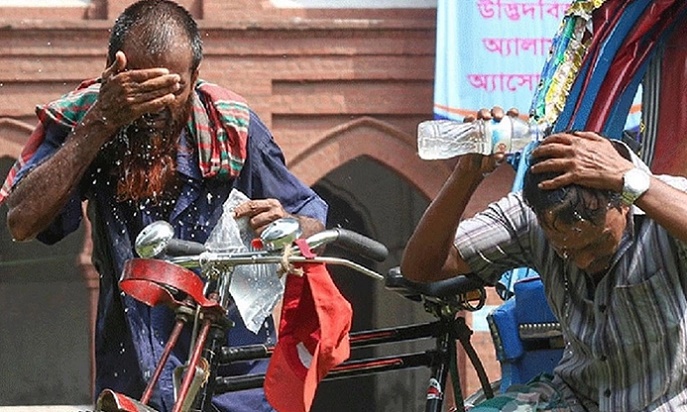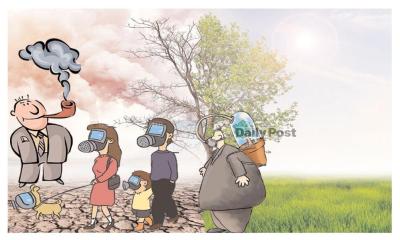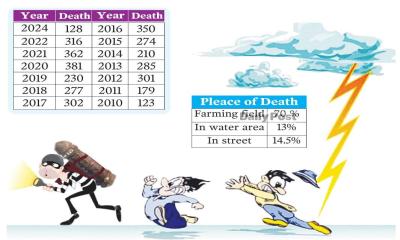# Heat stroke kills 17 in 4 days
# Elderly & working people are in extreme risk
# Four guidelines from DGHS to reduce heat stroke
Severe heat wave is blowing over the country. Humidity is burning in the body with extreme heat. Despite the seasonal rain and storms bring some relief, this time there was no rain. As a consequence, like the last two years, the month of April became terrible for the countrymen.
Meanwhile, educational institutions have been declared closed due to the excessive heat. A state of emergency, such as a heat alert, has been issued. Besides, the number of patients suffering from diseases like diarrhea, dysentery, fever and cold is increasing in the upazila and district level hospitals across the country including the capital.
Every day there are deaths due to heat stroke in different parts of the country. In the last four days, 17 people have died of heat stroke across the country. However, many believed that more people are dying than the number of deaths reported in the media. Yesterday, a policeman named Alamgir Sikder died in Dhaka and Mohammad Shah-Alam in Patuakhali's Bauphal. He was working in the Detective Branch (DB) of police.
Heat wave is blowing in almost all parts of the country. Of these, severe heat wave is blowing in 9 districts including Rajshahi, Pabna, Khulna, Bagerhat, Jashore, Chuadanga and Kushtia. Temperatures in these regions have been recorded above 40 degrees. In those districts, the number of patients in the hospital is increasing with the heat wave. Especially children and elderly people are getting sick.
The Meteorological Department does not have the exact information about whether the record of high temperature in so many regions has been raised in Bangladesh in the last few years. The weather is likely to last for the next 10 days, the agency said. They also feared that the temperature could exceed 44 degrees. In such a situation, the Directorate General of Health Services (DGHS) has given four-point instructions to reduce the risk of heat stroke.
The guidelines are as follows: 1. Stay away from intense heat, take rest under shadow. 2. Drink plenty of safe water. Avoid street food and drinks to avoid deadly
water borne-diseases including Hepatitis A, E, diarrhoea, taking bathe more than once if necessary. 3. In hot weather, wear loose, thin and light colored clothes, avoid dark colored clothes if possible. 4. Visit doctors, if any symptoms such as stopping of sweating, nausea, severe headache, increased body temperature, decreased appetite, burning sensation, convulsions and fainting are shown during this hot weather.
Meanwhile, the maximum temperature in Dhaka has increased again after falling for two consecutive days. The maximum temperature in the city was recorded at 38.4 degrees Celsius yesterday.
According to the Meteorological Department, there is a possibility of rain in some parts of the country in 24 hours, but there is no possibility of rain in the whole country in the next one week. The highest temperature in the country was recorded at 42.6 degrees Celsius in Jashore on Saturday. This was the highest temperature of the year.
On that day, the temperature in the capital was 40.4 degrees Celsius. It was also the highest temperature in the city this year. However, the temperature in the city dropped by 2.2 degrees Celsius in a span of 24 hours on Sunday. The maximum temperature on that day was 38.2 degrees Celsius. The temperature in Dhaka dropped further to 37.8 degrees Celsius on Monday.
Md Azizur Rahman, director of Bangladesh Meteorological Department, said there is little chance of heavy rains across the country in the next three to four days. There may be rains in different parts of the country in the beginning of May. Then the temperature may drop. At present, mild to severe heat wave is sweeping over more than 40 districts of the country.
ZH






